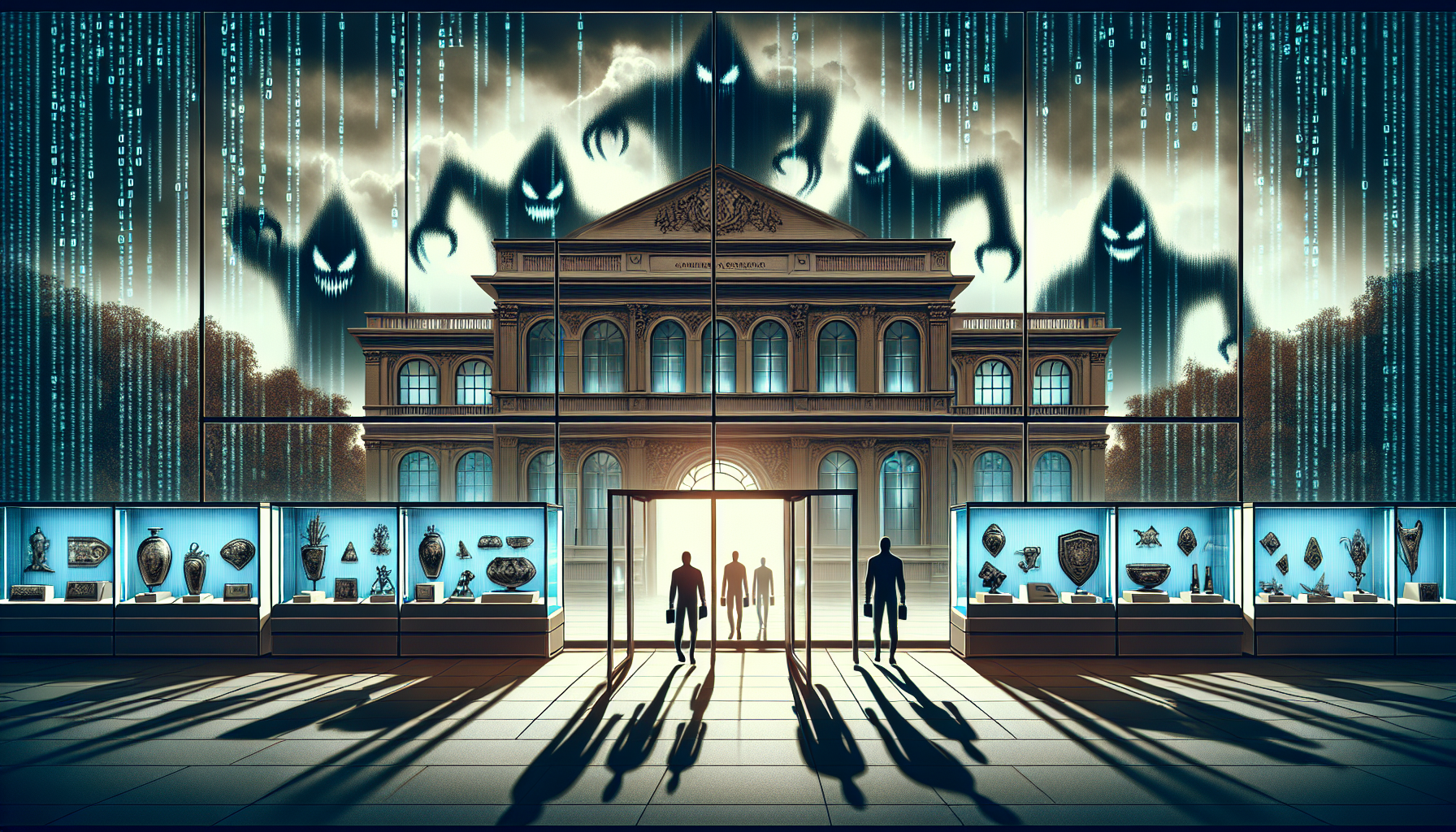A cyberattack on widely used software has rocked the museum world, leaving several prominent institutions unable to display their collections online and manage sensitive information. The attack targeted Gallery Systems, a popular service provider that helps cultural organizations showcase their works digitally. Institutions such as the Museum of Fine Arts Boston, the Rubin Museum of Art in New York, and the Crystal Bridges Museum of American Art in Arkansas have all confirmed experiencing outages as a result. The attack has raised concerns about the security of valuable data, including donor information and provenance records, and highlights the growing prevalence of cyberattacks against cultural groups. The full impact and extent of the attack remain unclear, but experts warn of the potential immense loss to the world’s knowledge if crucial information about artifacts is permanently lost.
Museum World Hit by Cyberattack on Widely Used Software
Introduction
Several prominent museums have been targeted in a cyberattack that has affected their ability to display collections online and manage internal documents. The attack has impacted a technological service provider, Gallery Systems, which is widely used by cultural organizations to showcase their works digitally. Museums such as the Museum of Fine Arts Boston, the Rubin Museum of Art in New York, and the Crystal Bridges Museum of American Art in Arkansas have experienced system outages as a result of the attack.
Affected Museums
The Museum of Fine Arts Boston, the Rubin Museum of Art in New York, and the Crystal Bridges Museum of American Art in Arkansas have confirmed that their systems have experienced outages due to the cyberattack. These institutions rely on Gallery Systems software to showcase their collections online and manage sensitive information. The disruption has affected their ability to provide access to their digital collections and has hindered internal operations.
Service Provider’s Response
Gallery Systems, the service provider that was targeted in the cyberattack, promptly responded to the incident. Upon noticing the problem on December 28, the company took immediate action to isolate affected systems and prevent further damage. Third-party cybersecurity experts were engaged to assist in investigating the attack, and law enforcement was notified. Gallery Systems has yet to comment on the attack and has not responded to requests for further information.
Disruption on Museum Websites
The impact of the cyberattack on museum websites is noticeable through the inaccessibility of eMuseum, a tool that allows visitors to search online collections. Users attempting to access museum websites during the disruption may encounter limitations in browsing collections and accessing relevant information. This disruption has also affected the functionality of external services, such as online ticket sales.
Curators Unable to Access Sensitive Information
Alongside disruptions to public-facing services, curators have reported difficulties accessing sensitive information through Gallery Systems’ TMS program. This program houses vital information related to donors, loan agreements, provenance records, shipping details, and storage locations of valuable artworks. The inability to access this information poses significant challenges for curators in managing and researching their collections effectively.
Common Cyberattacks on Cultural Groups
Cyberattacks targeting cultural groups have become increasingly common in recent years. In a previous incident, personal data was stolen from the British Library by a ransomware group that subsequently released internal human resources files. The Metropolitan Opera and the Philadelphia Orchestra also encountered cyberattacks last winter, resulting in disruptions to online ticket sales. Ransomware groups often carry out such attacks, holding online services hostage until a ransom is paid. The specific nature of the cyberattack on Gallery Systems remains unclear at this time.
Museums Not Affected
Not all museums utilizing Gallery Systems software have been impacted by the cyberattack. The Metropolitan Museum of Art and the Whitney Museum of American Art, for example, host their own databases, which has protected them from the attack. The ability to host their databases independently has ensured the continuity of their digital collections and sensitive information.
Unclear Nature of the Attack
The details regarding the nature of the cyberattack on Gallery Systems and its motives remain unclear. The lack of information complicates the assessment of the impact of the attack and the steps necessary to mitigate and recover from its effects. Understanding the motives behind the attack and identifying the responsible parties are crucial in preventing future incidents and protecting cultural institutions from cyber threats.
Extent of Cyberattack
The full extent of the cyberattack’s impact on museums and their collections is yet to be determined. The repercussions of the attack go beyond just the disruption of online services and access to sensitive information. Museums hold valuable cultural artifacts, but the information associated with these objects is equally valuable. The loss of such information could have a profound impact on our understanding of history, art, and cultural heritage.
Impact on Museum Collections
The cyberattack on Gallery Systems puts a spotlight on the vulnerability of museum collections to digital threats. The attack has hindered the ability of museums to display their collections online, limiting public access and engagement. Moreover, curators’ restricted access to sensitive information hampers their research and preservation efforts. The attack serves as a reminder of the importance of robust cybersecurity measures within cultural institutions to protect their collections and ensure the longevity of valuable cultural heritage.
In conclusion, the cyberattack on widely used software affecting numerous museums highlights the growing threat of cyberattacks on cultural institutions. The impact on affected museums’ ability to showcase collections online and manage internal information is significant, posing challenges to both public access and internal operations. As cyber threats continue to evolve, cultural organizations must prioritize cybersecurity to safeguard their collections and protect invaluable cultural heritage.

